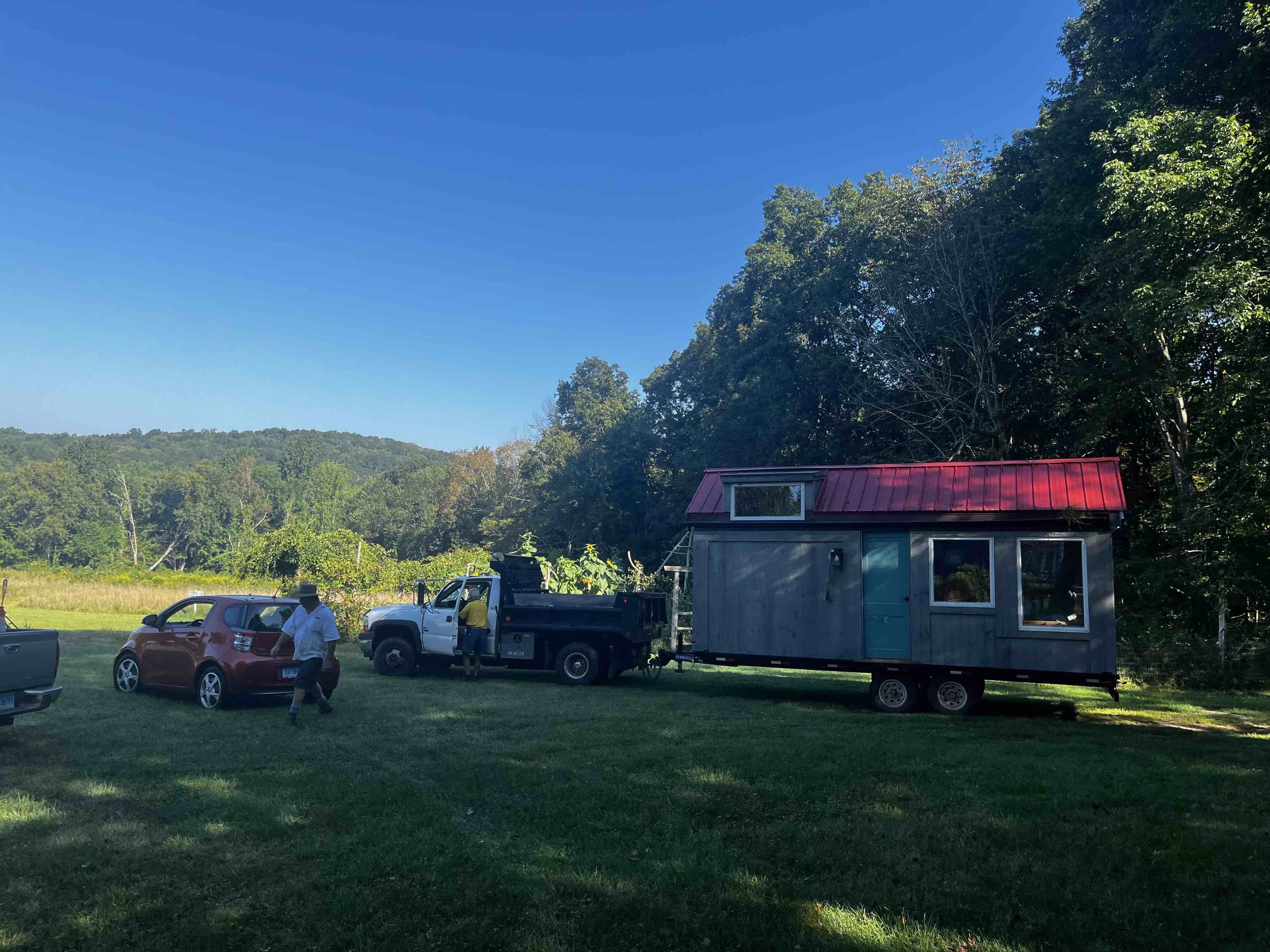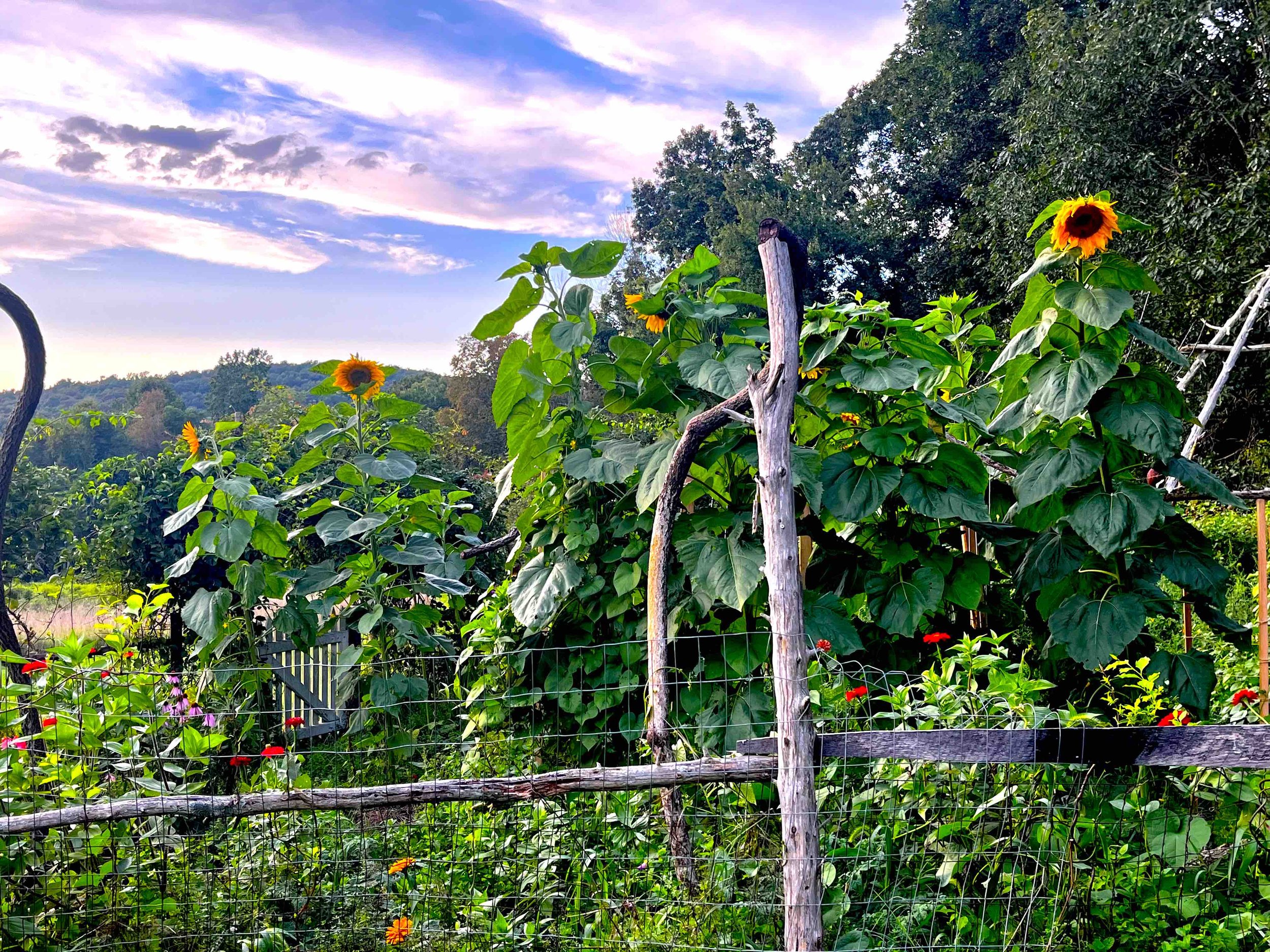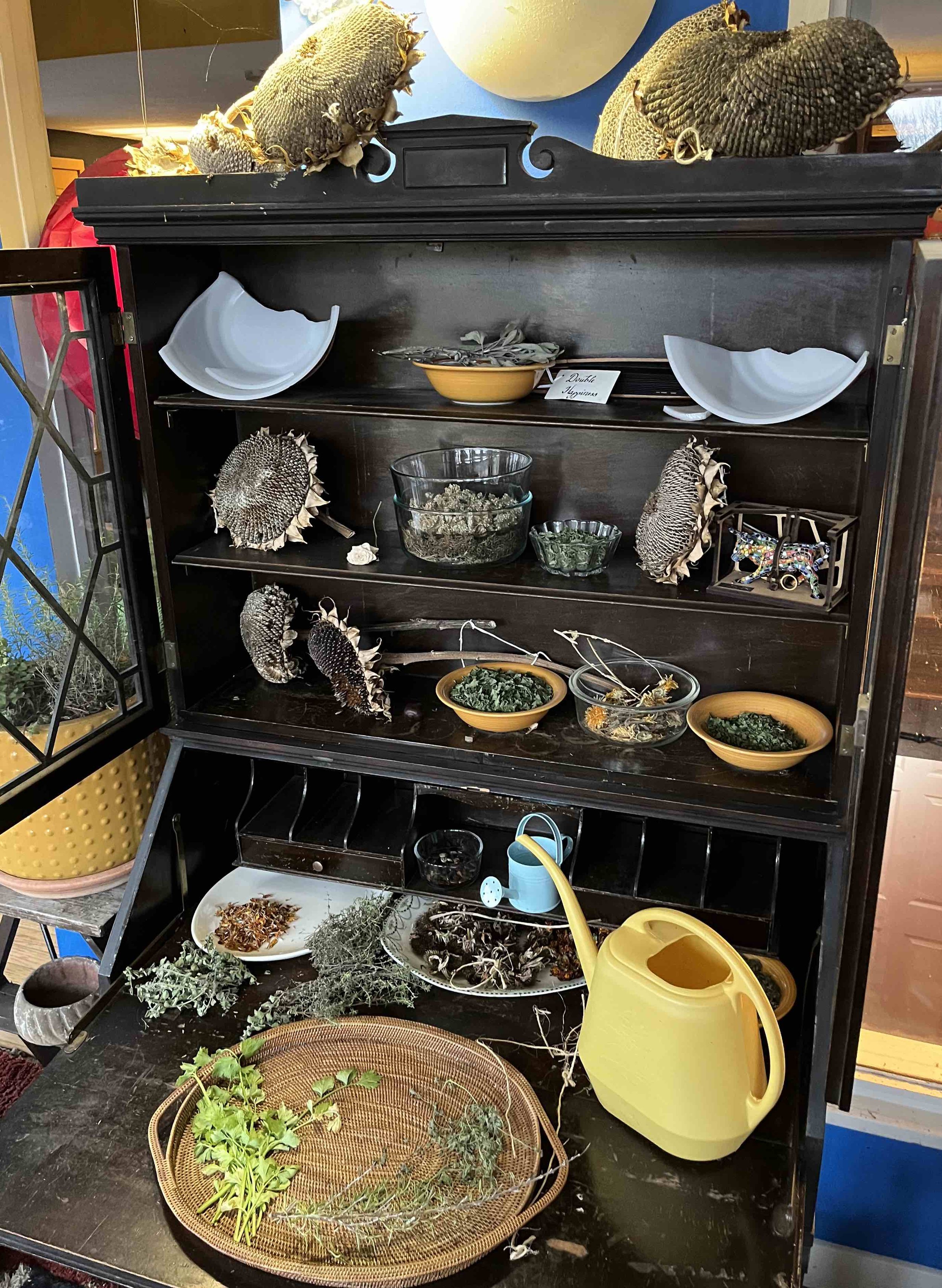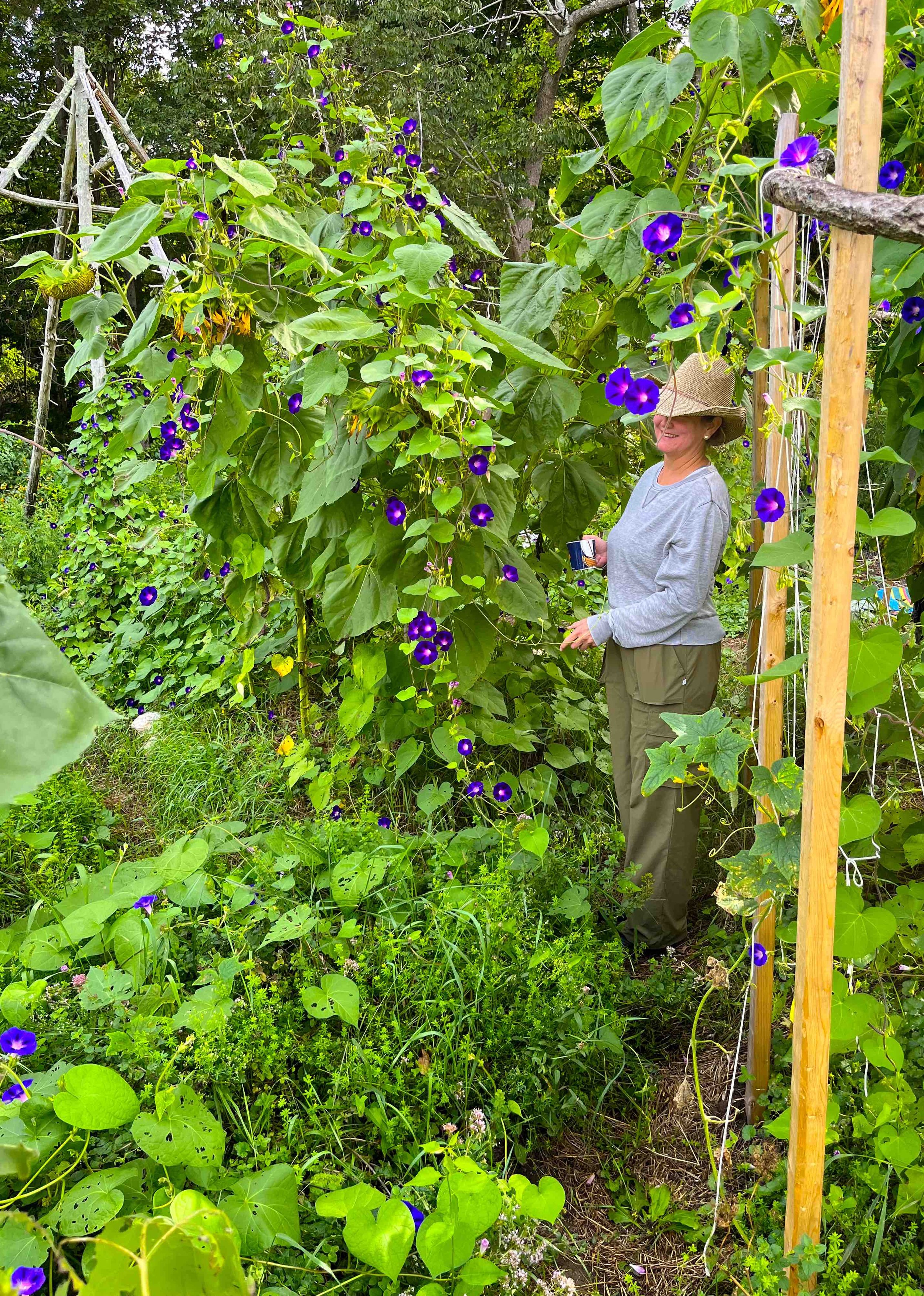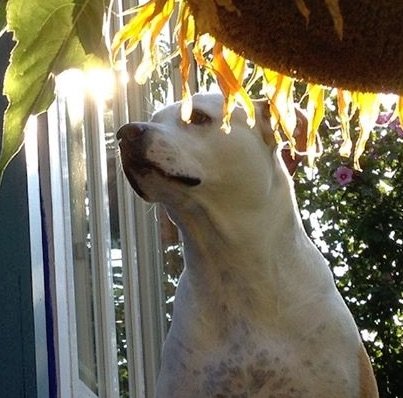The Warmest Winter
Dearest Two-Legged, Thank you for traveling around the solar system again with us one more time. From all of the Beings at the Sanctuary, we wish you Happiness, Health, Safety and A Life of Ease. We’ve had a full year of profound Life Teachings in 2023. We are here to absorb these lessons with Love and to share them with Each One who comes to the Sanctuary.
This felt like the warmest winter we can remember, no snow, lots of rain, lady bugs, and the goats are out at night, enjoying the temperate air and saucy moon. There is evidence that New England, and Connecticut in particular are heating faster than any other place in North America. There’s massive Change on the way. But there are up sides to these warmer damper winters. We remain hopeful and focused on building resilience through the practice of community in alignment with Nature and Spirit. This nexus between environmental restoration and re-experiencing the Spiritual Reality of Nature is what the Sanctuary’s mission is all about. Teaching and learning about the world from this eco-centric, and not anthropocentric worldview, is central to our pedagogy here at the Sanctuary.
What does it mean, to teach ethics as if all beings mattered, not just Two-Leggeds? The ideology of western colonialism is that humans are the only rational, only self-conscious, only truly morally-relevant beings. But the wisdom of the Ancient Future is that the Two-Leggeds are not at the top of the cognitive hierarchy, but rather somewhere midway.
Non-Human Intelligence and Eco-centric Ethics
First Nation peoples have always acknowledged and relied upon guidance from the non-human intelligences of Nature, and realized that, having been here longer than humans, many of the plants and animals have forms of awareness and wisdom superior to the Two-Leggeds. Each species possesses specialities we can learn from each other. The real heart of the Sanctuary’s 40 acre land trust is not what us two-leggeds are up to with all this philosophy and spirituality stuff, but down past the meadow and into the forest, where the Sanctuary beaver colony has been busy for years now building an ingenious system of dams, canals and many acres of new ponds, adding priceless new habitat, biodiversity and water filtration and storage capacities into the local ecosystem.
The main beaver dam is approximately two hundred feet long and ten feet high. Their work is truly stunning, all the more so when you appreciate the status of beavers as an ecological keystone species. In the near future when we can no longer take access to clean water for granted, beavers will be recognized for what they are already: the most effective climate change remediation engineers in the universe. As you can see in the video below, beaver dams build habitat for a variety of creatures.
The Sanctuary offers classes in beaver ecology and tours of the beaver colony for students and visitors. This fall we hosted students from Franklin Academy in East Haddam for a talk about affordable housing as well as a sleepover meditation circus yoga bubble party for students of The Children’s Tree Montessori School, as well as private groups. Please contact the Sanctuary at info@oursanctuary.org for more information and to schedule an event or visit.
The Sanctuary goat family expanded this year, with the arrival of three tiny fainting goats, Henry, Elizabeth and William, which along with Maddy, Matilda, Mila, Flora and Maxine now makes eight. Originally rescued from three different families, this new group is now a tight unit, spending most of each day free ranging across the land trust, basically feeding themselves off the rich resources of the land, and living as close to nature and pure freedom as one can imagine. The goats are far more self-sufficient than we are, and always seem to be sweet and in a good mood. They are truly grateful for their freedom, and they share their joy with any visitors they happen to cross paths with. They always find lots to eat in the forest, no matter what time of year, especially with Maxine always leading them to the best places.
’Do you milk them?’ people always ask. Yes, we milk them for wisdom and their highly advanced powers of mindfulness, non-judgment and deep connectedness to the biome.
The goats at the Sanctuary are some of our favorite friends and teachers. If you ever get to spend many regular time with non-human persons, you begin to notice just how crazy the two-leggeds are, what with all their ideas and planning and judgments and worries. When you are with the goats or the cats or the birds, there is a purity of presence and spiritual awareness and connection to Reality that cuts through so much human-created stress and ideation.
Practicing Forgiveness
Our Meditation Miracles Sangha continues to met on most Sundays this past year to to meditate and study A Course in Miracles, the amazing path of forgiveness aka spiritual psychotherapy. Forgiveness work is central to our spiritual practice and our philosophy and pedagogy. Learning to live without judgment - for other people, for your Self, for the evil doers in the world, for the universe, for Creator. Have you ever thought, ever felt that it might be possible to let all judgments of self go, and that might be the pathway of Peace? This is what we study and practice, and it is truly miraculous. And what is a miracle? A miracle is a perception of yourself without judgment. Think about how powerful that could be. Our group also practices the Circle of Eight healing meditations, which we used this fall for several members of our extended community. This group is open to the public, no prior experience necessary. For more information or to be on the Meditation Miracles Sangha email list, please email Vood at info@oursanctuary.org.
This summer the goats often joined our Meditation Miracles Sangha, laying right down in the middle of our meditation circle, bringing ease to the two-leggeds. Matilda thought the Course was absolutely delicious. Our sangha will be practicing A Course in Miracles’ year-long forgiveness training program centered on the daily forgiveness meditations from the Course’s Workbook for Students. If you’d like to join our text chat for this meditation, contact Vood.
Songs of Prayer
“Jazz washes away the dust of life.” (Art Blakey) During 2023, the Sanctuary also hosted performances by some incredible musicians who have become regular features of our summer programing, including the world-famous French jazz guitarist Stephane Wrembel, the Japanese-born guitarist Hiroya Tsukamoto, the Brooklyn-based Middle-eastern fusion band Bakalava Express and song-writing legend Dan Bern. We’re looking forward to having these musician friends back in 2024. Music is a key part of our embodied, interfaith approach to spiritual formation.
Other Happenings in 2023

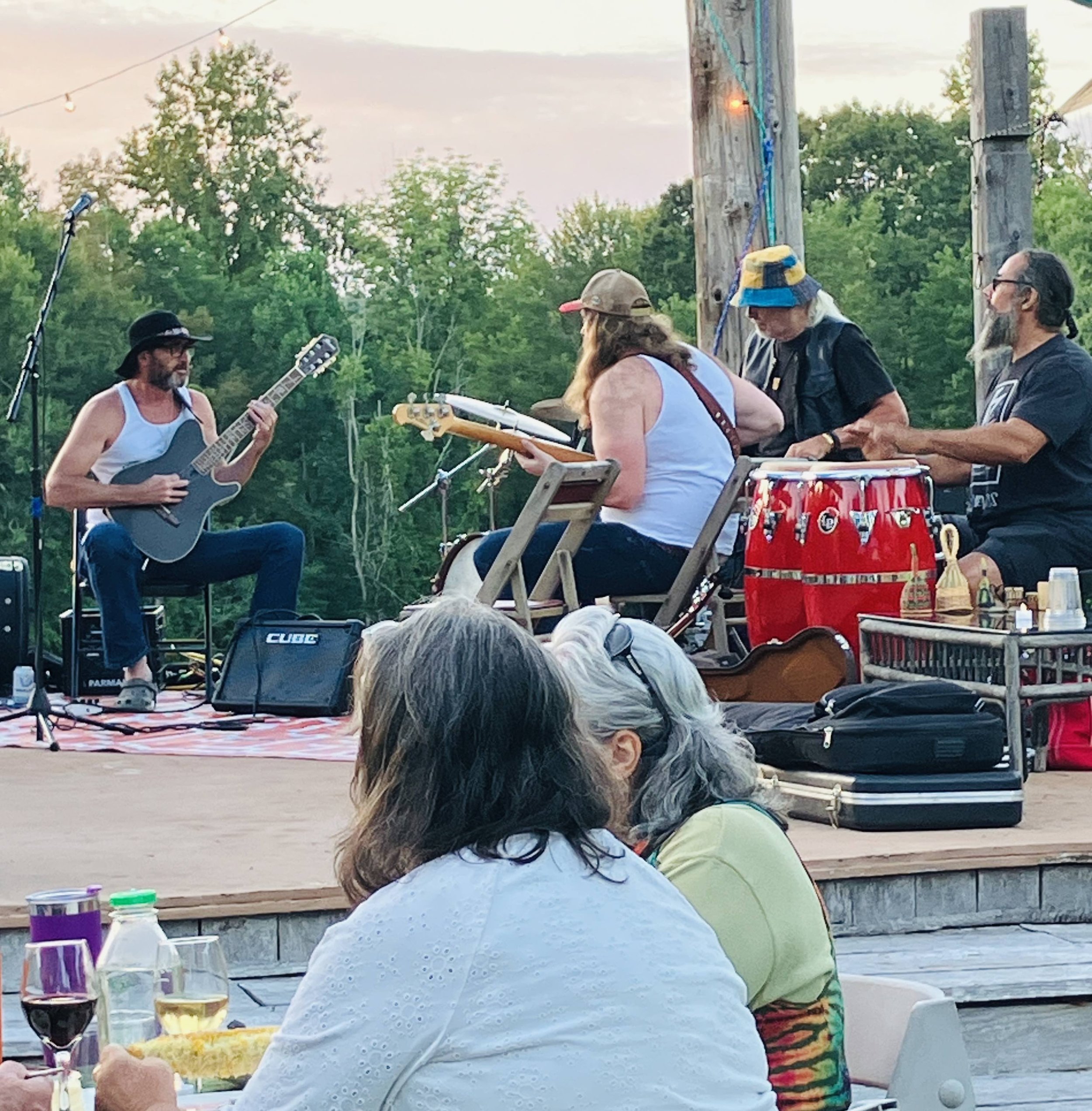
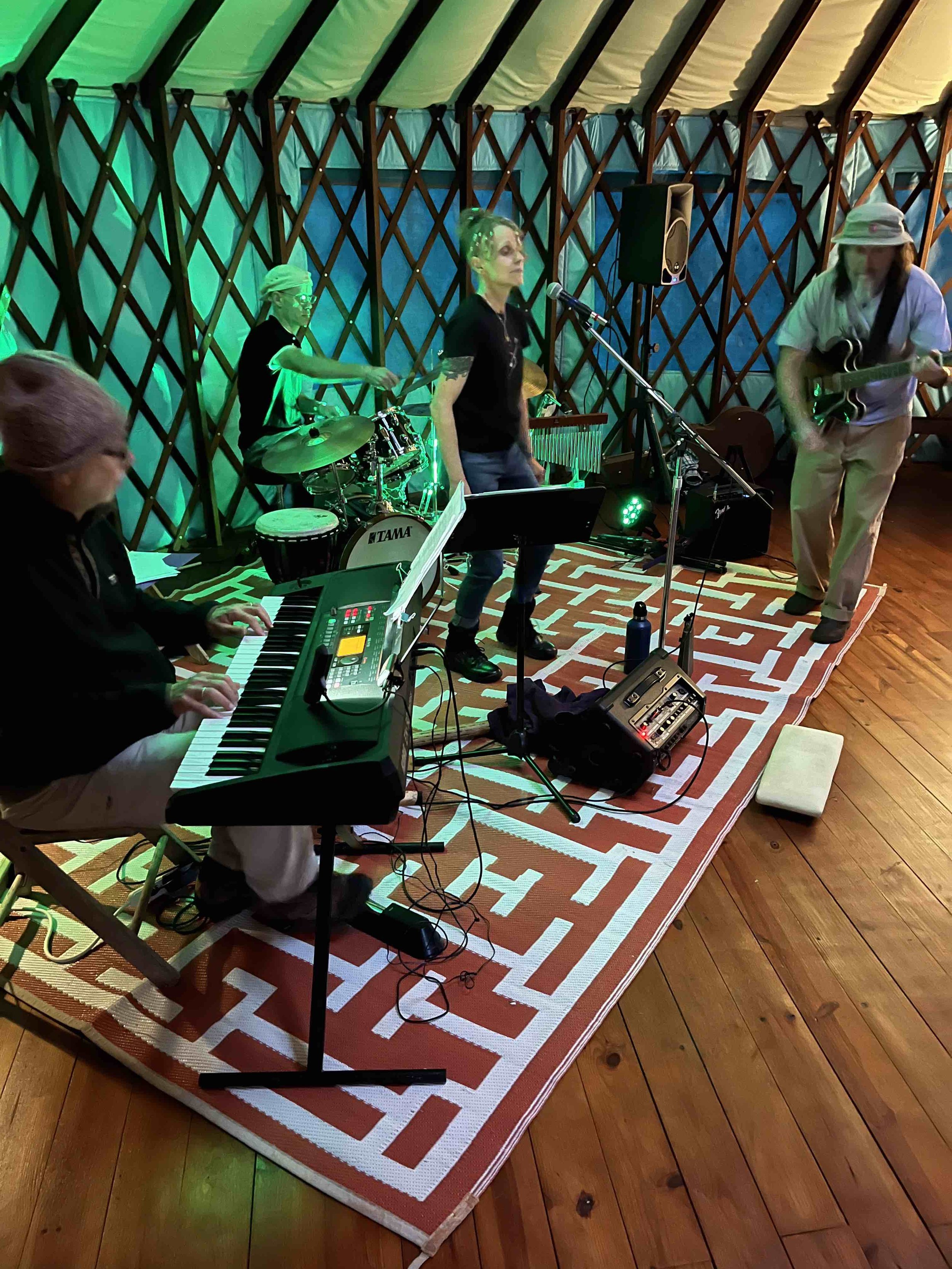
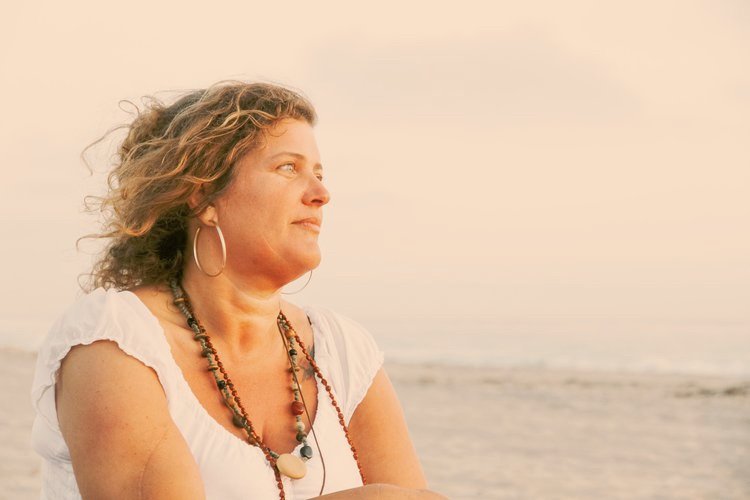
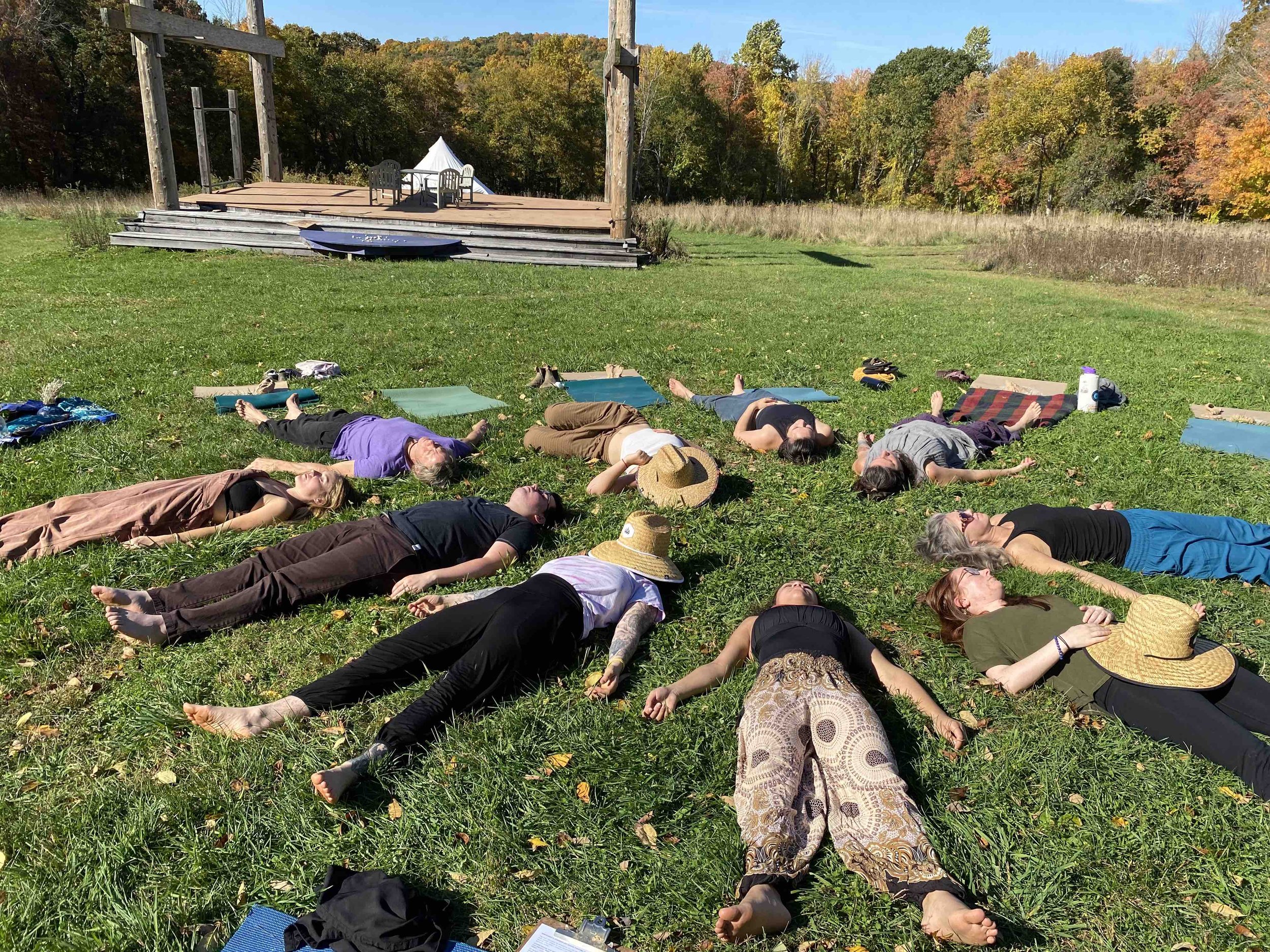

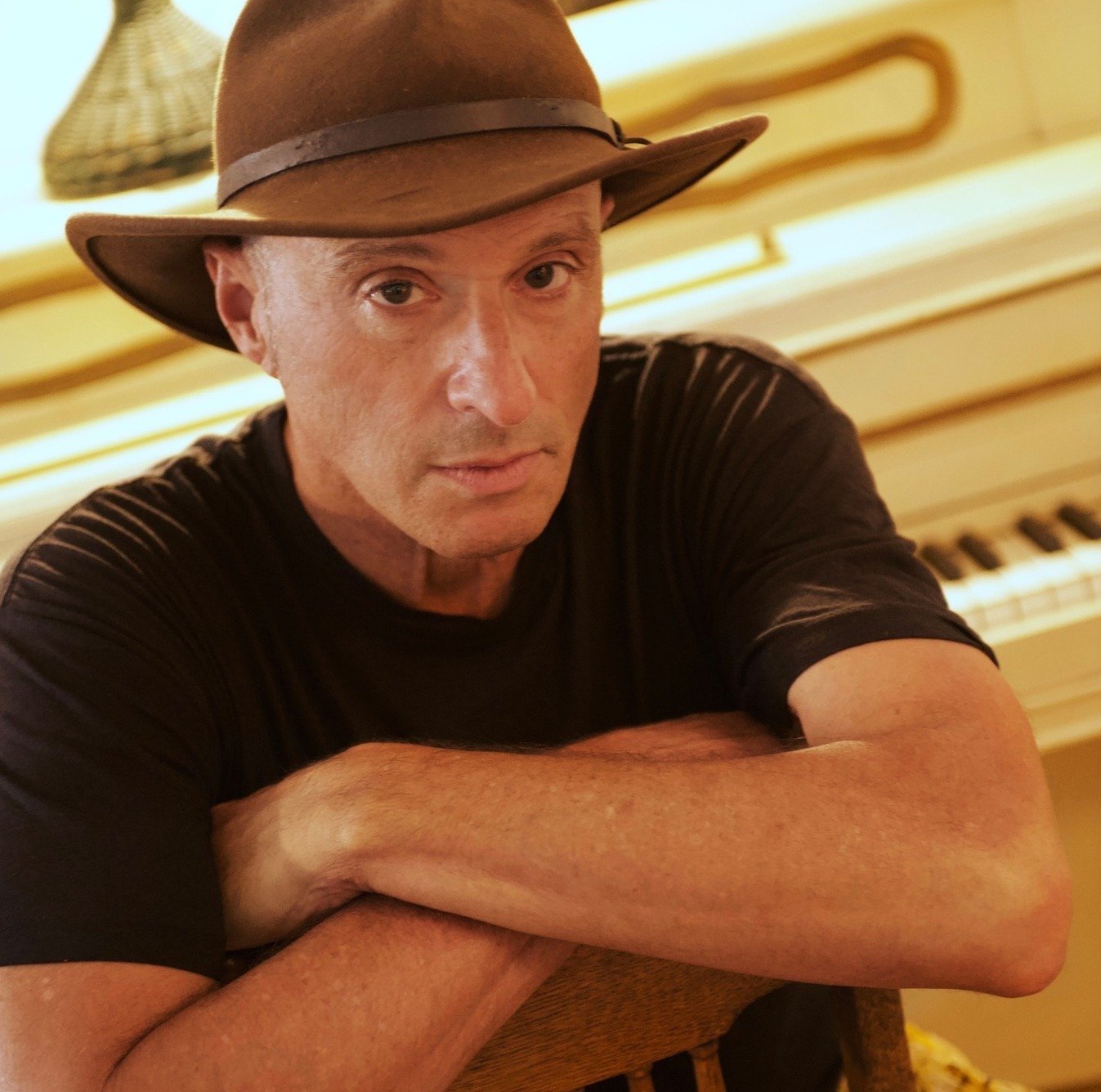
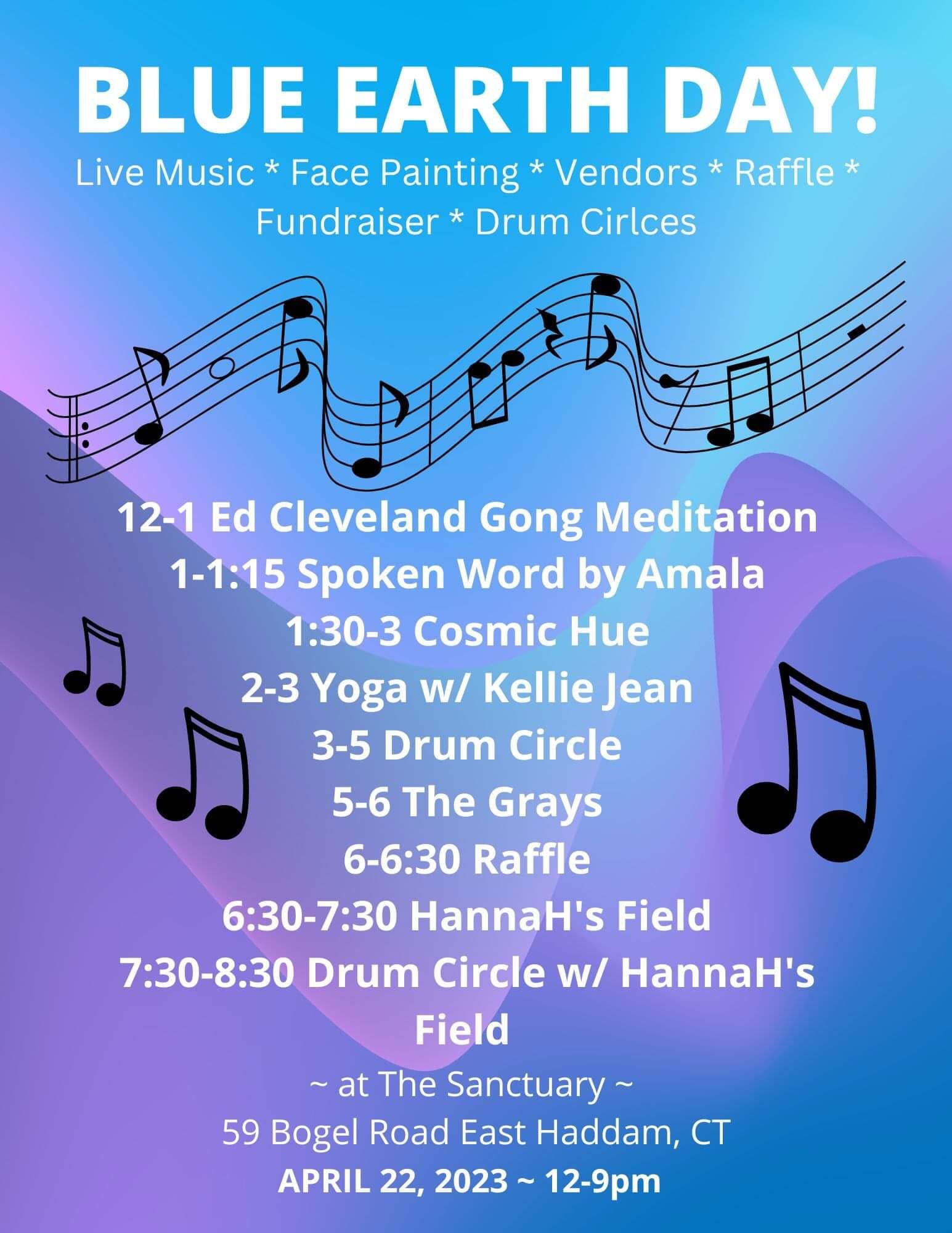
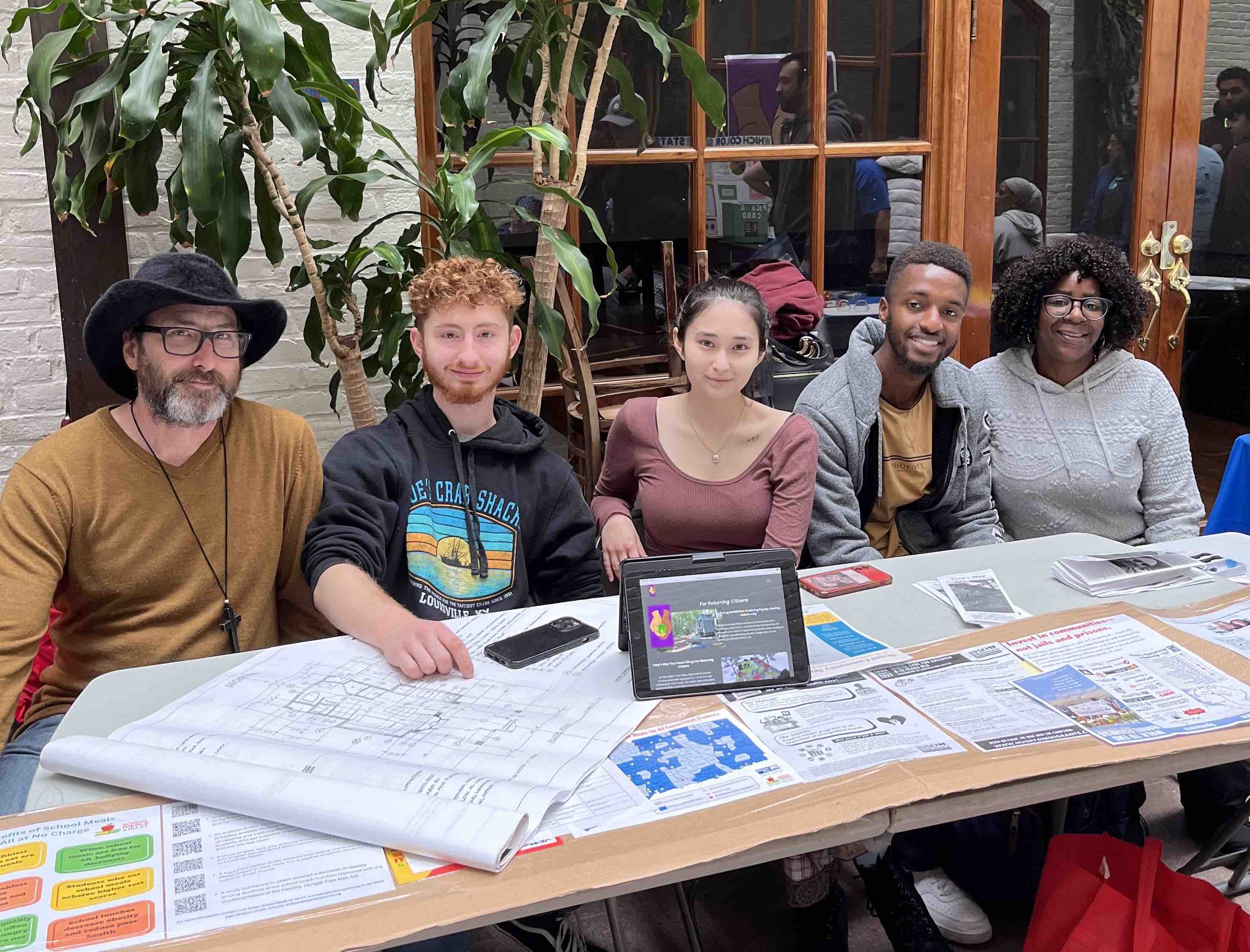
Resilience, Sustainability and the Land Ethic
Like many other organizations paying attention to abrupt irreversible climate change, we have been focused on developing local self-reliance, healthier diets based on locally-grown and prepared foods, natural ingredients and using the natural herbal medicines of nature. Part of our work has been to create a permaculture garden at the Sanctuary fertilized by the goats and chickens, growing vegetables and in particular a variety of herbs.
Do you own the land, or does the land own you?
When the young ecologists from the Franklin Academy came for a visit in December, they were especially interested in the affordable and sustainable housing issue and wanted to talk to us about what we’ve learned. One of the things that always comes up with visitors to the Sanctuary is the concept of a land trust. ‘Is this your land?’ one of them asked. ‘No, this is a land trust. It’s decommodified land, so no one can own the land.’ We replied. ‘So the government owns it?’ No, that’s what’s called public land. The Sanctuary is part of The Commons, what we all share together.’ The idea left the students baffled, but after some conversation they began to understand the link between the beautiful biocentric wisdom of the land trust concept and the traditional indigenous ethics of the land. We discovered in our research into the ethics of Native American societies that there’s a fundamental difference between their ethical values and the values of Euro-centric descendants of colonialism. Whereas modern people believe that land can be owned by individual persons, First Nation peoples believe that people are owned by the land they inhabit. This is why in Chief Seattle’s famous 1854 letter to President Franklin Pierce, he responds with incredulity at the US government’s proposal to “buy” their land.
“The President in Washington sends word that he wishes to buy our land. But how can you buy or sell the sky? the land? The idea is strange to us. If we do not own the freshness of the air and the sparkle of the water, how can you buy them? Every part of the earth is sacred to my people. Every shining pine needle, every sandy shore, every mist in the dark woods, every meadow, every humming insect. All are holy in the memory and experience of my people…This we know: the earth does not belong to man, man belongs to the earth. All things are connected like the blood that unites us all. Man did not weave the web of life, he is merely a strand in it. Whatever he does to the web, he does to himself.”
The Sanctuary land trust was established as an educational project to focus on the nexus of environmental restoration and interfaith spiritual formation. This places us in a deep alignment with the kinship worldview of traditional indigenous ethics. As such part of our mission has been served through projects at The Sanctuary meant to teach through demonstration alternative ways to in habit and live off the land.
Tipis and Tiny Houses: Two Sustainability Projects in the Works
Meditation Tipi Project
Dedicated to our fallen brother Brian Donovan (on the left - also pictured Nate Nadeau in the middle and Nick Capozza on the right) who helped begin this project, we are hoping to turn this structure into another sacred space for community events. We have an amazing Lakota-style skin for it and are still fund-raising for construction of a deck platform. Many thanks to the Mighty Companions who contributed to this project this year including Marky Donovan, Sarah Jane Davis, Meauxdinn, Joan Kryston and secret others. For more information visit Sanctuary Tipi Project.
The Tiny Hermitage
This beautiful, self-sufficient and ingeniously reduced to the sacred geometry of bare essentials concept of a house, the love child of legendary maverick architect, beastly gypsy musician and Sanctuarian Hans Lohse, has returned to the land trust after being originally constructed here back in 2016-17, purchased by Robin Gilmartin and Diane Mack, and then donated back to the Sanctuary this past fall. The reason? Tiny houses are illegal in CT! Connecticut has the most defunct, classist and dangerously regressive zoning codes, making it the worst place in the US for truly sustainable, environmentally-friendly and truly affordable housing. This beautiful proto-type of environmentally-just housing will serve as a demonstration project for anyone interested in coming by the Sanctuary to experience the winning model for affordable and sustainable housing: self-sufficient tiny houses on land trusts. Thank You Robin and Diane for this great gift! She will educate countless minds in coming years.
Peter “Sparrow” Good (1942-2023)
Father, Graphic Designer, Artist, Member of the Bird Tribe, Creator of the iconic “Hartford Whalers Logo”
Sally Taylor (2011-2022)
Best Friend, Teacher, Holy of Holies








